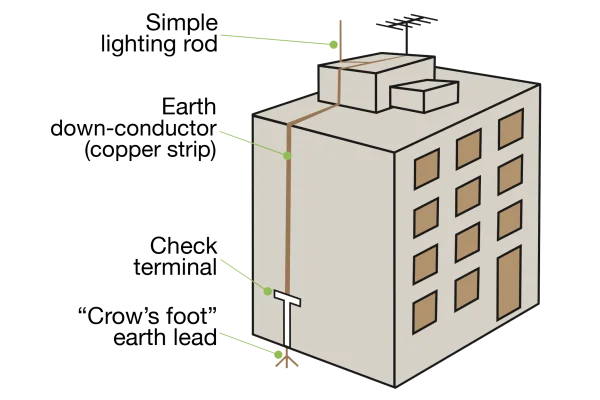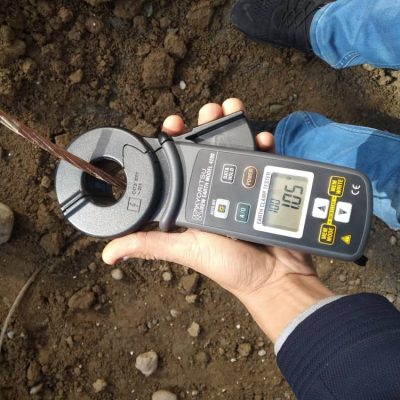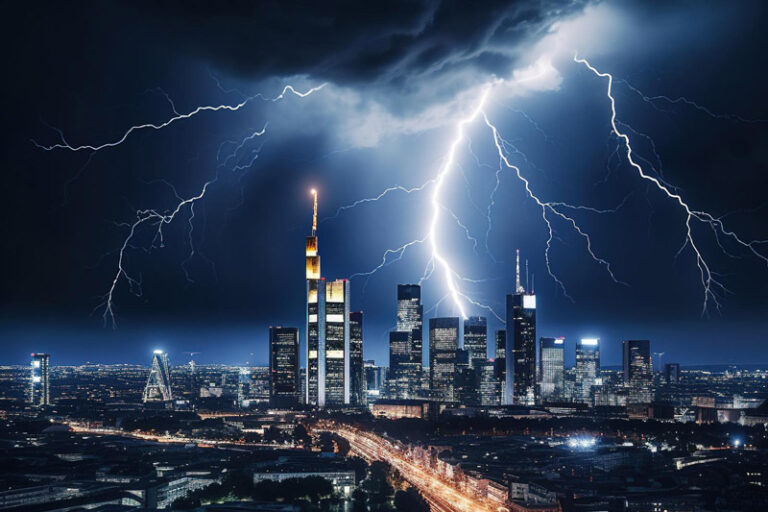Lightning rod installation training
- Post author:armaghan kia
- Post published:April 2, 2024
- Post category:Lightning Protection
- Post comments:0 Comments
Lightning protection systems are vital for protecting buildings and structures from lightning strikes. They capture the electrical discharge and redirect it safely into the ground, preventing harm to people, damage to property, and financial losses caused by lightning.
Key Components of a Lightning Protection System:
- Lightning Rod: This tall metal rod, placed at the highest point of a building, is where lightning first strikes.
Down Conductor: A thick copper wire that carries the lightning’s electrical current from the rod to the ground.
Earthing System: A network of copper wires buried in the ground that safely disperses the lightning’s energy into the earth.
Steps Involved in Installing a Lightning Protection System:
1.Choosing the Right System:
There are two main types of lightning protection systems:
1. Franklin Rod System: Uses a single tall metal rod as the lightning rod.
2. ESE (Early Streamer Emission) System: Utilizes a network of shorter metal rods as lightning receptors.
2. Determining Protection Radius:
The system’s protective radius depends on the structure’s height and the chosen system type.
3.Deciding Where to Install:
- Place the lightning rod at the highest point of the structure.
- Ensure the down conductor follows the shortest path to the earthing system.
- Properly bury the earthing system for effective grounding.
4.Installing the Components:
Meticulously install the lightning rod, down conductor, and earthing system, following relevant standards.
5.Testing and Inspection:
After installation, qualified professionals thoroughly test and inspect the entire system to ensure it works optimally.
Crucial Considerations for Lightning Protection System Installation:
- Installation should be done by trained experts. Before starting, check the site for existing electrical installations. Regular maintenance by professionals is crucial to keep the system working well.
Detailed Steps for Installing the System Components:
Lightning rod installation:
Install the lightning rod at the highest point of the structure using secure mounting bases. Ensure it’s firmly connected to the structure.

Down conductor installation:
- The down conductor should take the shortest route to the earthing system, made of thick copper. Ensure secure connections between the down conductor, lightning rod, and earthing system.

Earthing system installation:
- The earthing system needs to be buried deeply and cover a wide area. Use thick copper wires for construction. Ensure a strong connection between the earthing system and the down conductor.

Testing and inspection:
After installation, it’s crucial to have qualified professionals conduct thorough testing and inspection to ensure the system works properly. This includes:
- Testing electrical resistance
- Checking connections
- Testing the system’s performance

By having a good lightning protection system that’s well-designed and maintained, you can greatly lower the risks of lightning strikes. This helps keep your property and everyone inside safe.



